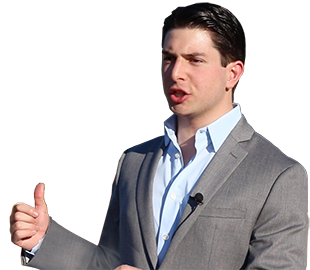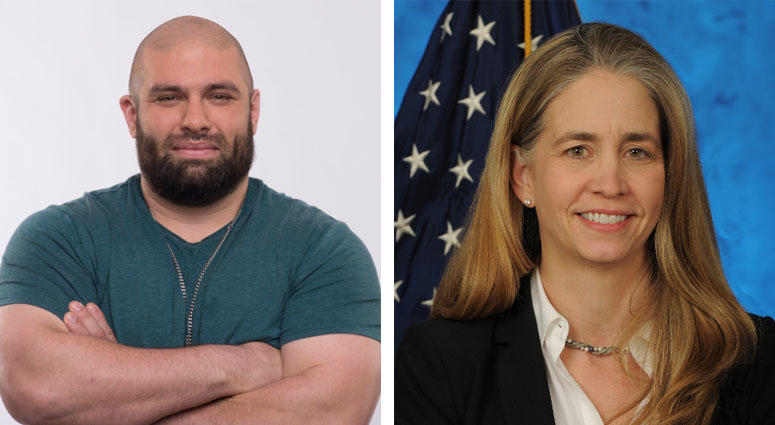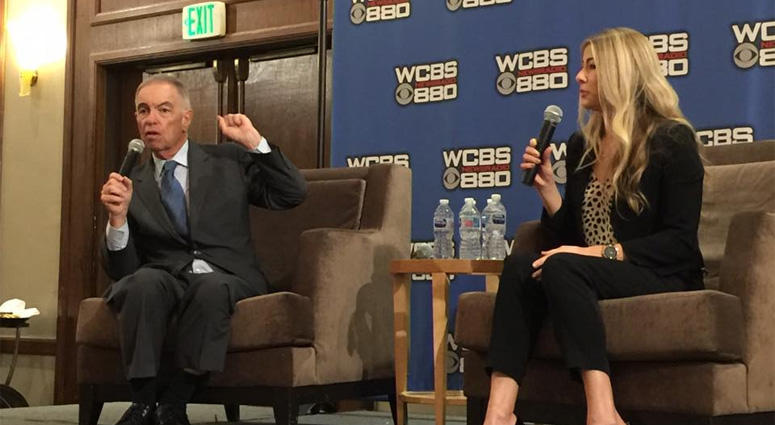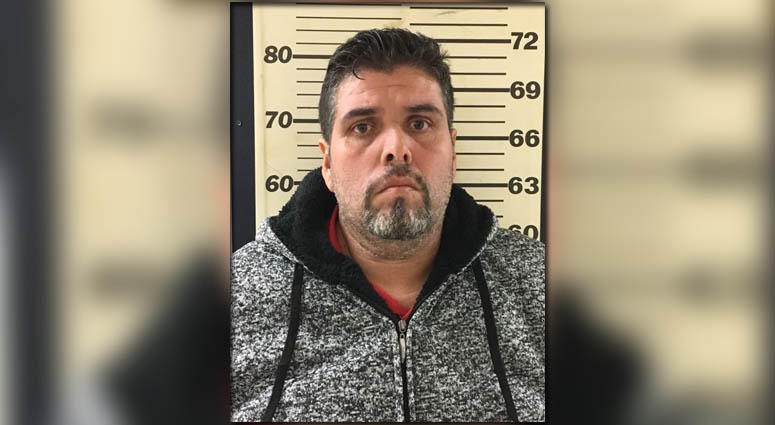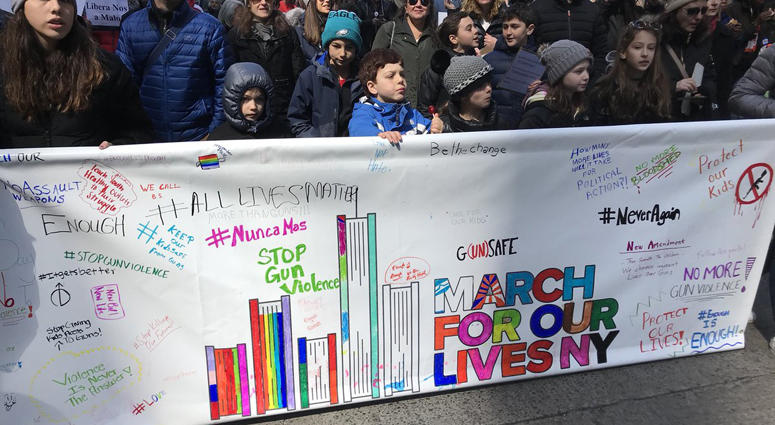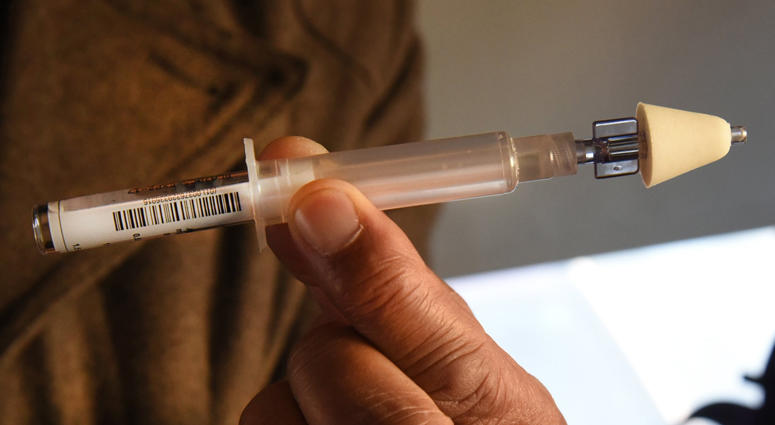
Lee Brice: Garth Brooks is my hero | Kurt's Country
Neil A. Carousso produces NewsNation original “Kurt’s Country” – a celebration of country music and a slice of Americana with host Kurt Bardella.
The Latest

Mastering Media Strategies: Insights from Industry Veterans

The Multi-Tiered Approach to Gaining Exposure and Credibility. Become a Repeat Source for the Media

Husband Sent Flirty Texts before Mica Miller’s Death, Waitress Says

Kristi Noem on Retraction: Kim Jong Un ‘Should Not be in the Book’

Kevin O’Leary: AI bossware can ID protesters and bar them from jobs

Neil A. Carousso Joins Growing NewsNation Network

Neil A. Carousso Departing WCBS 880

Art Business Founded by Former Foster Child Speaks to the Human Experience

1010 WINS Small Business $10K Challenge: Small Business Owners Make their Pitch for $10,000

NYC’s Élan Flowers Evolves into Blooming Subscription and Corporate Services
-
Campaign Urges Veterans To Get Mental Health Care If They Need It
Post Views: 1,356NEW YORK (WCBS 880) — May is Mental Health Awareness Month, and the U.S. Department of Veterans Affairs has launched a campaign to urge veterans to get help for if they need it.
The campaign is called “Mental Health Means a Stronger You.” It aims to reshape the perceptions and treatment by outlining the success stories of vets who have reached out for mental health support.
WCBS 880 Producer Neil A. Carousso talked about the campaign this week with Marine Corps veteran Moses Maddox – now veterans retention counselor at California State University San Marcos – and Dr. Wendy Tenhula, director of innovation and collaboration at the U.S. Department of Veterans Affairs.
It is part of the “Make a Connection” program, the VA’s ongoing national mental health outreach effort.
“While the conversation for mental health has gotten better, there’s still this stigma that, you know, either you’re weak or you’re crazy – a variety of things that people say when it comes to seeking, you know, mental health, that frankly just aren’t true, and that treatment is something that should be thought out, and that recovery can be achieved as long as you take your treatment seriously and as long as you actually go out there and seek that help,” Maddox said.
Maddox said some veterans might not seek out mental health care because of the stigma, some are concerned that it might limit their employment opportunities, and some don’t want to admit they need help because they feel like they can go through anything after having gone to war.
“And then they come home, and something as simple as a college class is extremely difficult because they’re cycling through things,” Maddox said. “So there’s a variety of reasons why people don’t go seek help, and this movement that we’re trying to do; this message is to say, ‘Hey, OK, people have been there before. We’ve gone through it. You’re not alone. Don’t be afraid to open yourself up and get that help.”
Tenhula said the “Make a Connection” program was launched a few years ago “to raise awareness about mental health conditions and to inform veterans, as well as their family members and other loved ones, as well as their country at large, that mental health conditions are treatable.”
She said hundreds of veterans have come forward and talked about their own difficulties, the treatments they have received, and how those treatments have made a difference.
“There are effective treatments available, and that recovery is possible,” Tenhula said.
Maddox said there are many factors that go into an effective mental health care treatment program.
“One is having a really good counselor who is very honest about the process; who told me that some days are going to be better than others; that there’s going to be sessions where I might leave the session feeling worse than when I started, but it was all part of the process,” he said.
He added that the first step is just to get help and understand that doing so can be scary and stressful – particularly since a therapist will start out as a stranger to whom a veteran is assigned.
“But keep in mind that it is OK; that it is a process, and you have to stick with it. There’s going to be days where it’s incredibly difficult. There’s going to be times when it’s going to be hard to go out of bed, and there’s always an excuse; a reason not to go. You have to not listen to that,” Maddox said. “Once you take that first step, you have to follow through, and those stressors tend to go away once you get comfortable with the process; once you start to see little incremental changes.”
The VA has also expanded the methods veterans can use to access mental health care, Tenhula said
“We’ve expanded the use of telehealth for mental health conditions, so a veteran can be in one location, and their doctor or therapist can be in another location, and they can work together using video conferencing technology. VA also has a number of mental health-related mobile phone apps,” she said.
Maddox’s message for other veterans was that he has an idea of what they’re going through – and he said veterans like openness, honesty, and frankness.
“It’s natural. But you’re not weak for going to seek out mental health treatment, and in fact, saying that I do need help is a great sign of strength, and that’s what we really encourage,” Maddox said.
-
Google’s Wendy Gonzalez Gives Advice On Sharpening Your Digital Skills At WCBS Small Business Breakfast
Post Views: 1,583STAMFORD, Conn. (WCBS 880) — Participants learned how to take full advantage of the digital tools available for their business at the WCBS Small Business Breakfast Wednesday morning.
.@JoeConnollybiz and @GoogleSmallBiz expert Wendy Gonzalez, our featured guest at the WCBS #SmallBusinessBreakfast, discuss what they learned from small business owners this morning on how to “expand your digital presence” and transcend it into sales. pic.twitter.com/YzQs62D3R6
— WCBS 880 (@wcbs880) March 28, 2018
Joining WCBS 880 Morning Business Anchor Joe Connolly at the Stamford Hilton was Google Small Business Marketing Expert Wendy Gonzalez. Guests heard tips on how to grow their business online and to sharpen their social media strategy.
https://www.facebook.com/wcbs880/videos/1499906383465333/
Among the pieces of advice Gonzalez passed along was how to make the social media presence for a business engaging and personable – even if the business itself might seem to be on the dry side. Connolly mentioned one man he knew who worked as an accountant, and engaged potential clients on social media by showing himself coaching his Little League team on the weekends.
https://www.facebook.com/wcbs880/posts/1499781796811125
“For a lot of people, the whole world in accounting is very scary, and it’s something that is the last thing on your to-do list to deal with. But everybody has to deal with taxes and business. You’ve got to deal with your finances – of course, you’ve got to deal with your finances,” Gonzalez said. “So you want to work with somebody who seems personable. The video can show that.”
https://www.facebook.com/wcbs880/posts/1499709043485067
She noted that no matter what the business, there is always something in that lends itself to video and social engagement.
“The first step, really, is to take a step back and say, ‘What’s our goal here?’ Because I think you can also see a lot of YouTube channels where they have a lot of videos, but none are very interesting. None feel very authentic. None feel like you’re getting information,” Gonzalez said. “So I think the first step is to say, ‘Well what’s the point? What am I really trying to do here?’ So in the case of that accountant, I think my goal would be, I am trying to show that I’m somebody that you want to hang with. I’m somebody that you can relate to. I’m coaching Little League. This is what I do on weekends. That is going to lead to a different video strategy and social media strategy, and someone who wants to show these products, or someone who wants to show these customer stories. It all depends a little bit on what your goal is.”
https://www.facebook.com/wcbs880/videos/1499698876819417/
Following the discussion, Gonzalez said the most important takeaway was that businesses are looking for ways to find customers the same as ever, but with new tools at their disposal.
“To me, it’s still the bread and butter of business that people are looking for customers. And people are looking for customers now on all sorts of different platforms, and approaches and strategies on how to find those customers, but ultimately, that is still what people are looking to do, and digital is a great way to find those customers now,” she said.
Gonzalez noted that when it comes to digital strategy, businesses are going well beyond the “hours and directions” box on Google.
https://www.facebook.com/wcbs880/videos/1499942043461767/
“When a business pops up on the right-hand side, that’s run through a program called ‘Google My Business.’ So business owners can claim that listing, and they can add their hours, and they can add photos, and respond to reviews, and we have a new feature called ‘local posts,’ where people can post information that’ll last for about a week, including videos – so just more engagement; new ways that people can – as a business owner – engage with their customers, right at those moments when customers are looking for them,” she said.
Google AdWords were also a major topic of interest at the breakfast. One man noted that if AdWord number one is too expensive, taking the second slot is not a bad idea.
“Ultimately, we are always trying to deliver a relevant experience to a user, so looking at your search term; looking at the ad text; looking at your website; finding what is relevant to whoever is searching, and sometimes that is the number two ad position,” Gonzalez said. “So of course, number one is great, but I think he made a great point that he sees a lot of success by sometimes being the number two search result.”
Now in its 23rd year, the WCBS Newsradio 880 Small Business Breakfast is the longest running small business event series in the New York area.
Neil A. Carousso produced WCBS Newsradio 880’s multi-media coverage of the Small Business Breakfast and assisted in organizing the event in Stamford, CT on March 28, 2018. All WCBS 880 videos and social media posts were written, edited and published by Neil A. Carousso.
-
Prosecutor: Mexican Drug King, Alleged Underlings Brought Enough Fentanyl Into NYC To Kill Millions
Post Views: 1,399NEW YORK (WCBS 880) — A Mexican drug kingpin and five others were indicted Tuesday in an alleged drug smuggling conspiracy, which authorities said brought enough fentanyl into New York City to kill 10 million people.
In the indictment filed by the New York City Office of the Special Narcotics Prosecutor, Francisco Quiroz-Zamora, 41 – also known as “Gordo” – was charged with operating as a major trafficker, conspiracy, and criminal sale of a controlled substance.
An indictment alleged Quiroz-Zamora, of the Sinaloa Cartel, was the Mexican-based source of a recent large shipments of fentanyl to New York City, and alleged that
A resident of San José del Cabo, Mexico, Quiroz-Zamora allegedly arranged for narcotics to be smuggled from Mexico to Arizona and California on trucks and cars and with drug couriers. He allegedly communicated directly with New York City drug customers, and arranged for members of his trafficking network to conduct drug deals, prosecutors said.
“Kingpin or major trafficker charges carry a life sentence, and that’s important because he had direct dealings from Mexico with a distribution network in New York City and with an undercover officer, and he was responsible for sending to New York City at least 50 pounds of fentanyl, which is charged in the indictment,” New York City Special Prosecutor Bridget Brennan told WCBS 880 Producer Neil A. Carousso. “And you know, fentanyl is so deadly. It’s viewed to be responsible for what will probably turn out to be a record-breaking number of overdose deaths here in New York City in 2017.”
Quiroz-Zamaroa was charged in connection with a bust that netted 44 pounds of fentanyl at the Umbrella Hotel in the Bronx on June 19 of last year, and on Central Park West on Aug. 4 of last year, prosecutors said.
He received about $22,500 from an undercover officer through a Western Union wire transfer, and came to New York City on Nov. 27 of last year to collect more money from the undercover officer, prosecutors said. But agents tracked Quiroz-Zamora’s movements as he took a circuitous route from Texas to Connecticut by plane, down to Delaware, and then to New York on an Amtrak train, prosecutors said.
Quiroz-Zamora was arrested at Penn Station on Nov. 27 and was originally charged in a complaint in Manhattan Criminal Court. He has been in custody since Nov. 29.
Prosecutors said they also busted a stash house on Central Park West at 105th Street, which was receiving the drugs that were being supplied by the defendants.
“What we found there was it was basically a packaging location; that the people inside that location were packaging many, many thousands of little glassines that were being filled with fentanyl or heroin, and some kind of other substance, and then ultimately, the stuff was headed for street distribution, and that was in a lovely Central Park West apartment with many other people living inside, and when you think about it, it’s a very dangerous situation,” Brennan said.
Five other defendants were also charged in the indictment. Prosecutors alleged that Carlos Ramirez, 27, of Colorado, was caught in a bust with an undercover officer; Jesus Perez-Cabral, 20, maintained the Central Park West drug stash along with Johnny Beltrez, 33; David Rodriguez, 32, was seen carrying suspected narcotics into a car outside the Central Park West building; and Richard Rodriguez, 43, was an Uber driver who drove off with the drugs.
Brennan emphasized that her office is cracking down on fentanyl, with overdoses having reached an all-time high of 1,400 deaths in 2017. Seizures also spiked by a factor of more than 12, from 35 pounds in 2016 to 491 in 2017.
Brennan explained that fentanyl is about 50 times more potent than heroin, and is also cheaper to wholesalers – making dealing in it an attractive proposition for drug traffickers.
“Because it’s a synthetic drug, it’s probably a tenth of the cost of heroin. And so, what we are seeing is that the cartel is sending to the U.S. fentanyl in place of heroin sometimes, or it’s sending up a load that mixes fentanyl with heroin. Heroin being much more expensive, the fentanyl allows them to make a whole lot more money, since when the buyers are buying the little packages in the street, they don’t know whether it contains fentanyl or heroin – it could be either – but they’re going to be paying the same price regardless,” Brennan said. “So it really enhances their ability to make a buck.”
Brennan emphasized that millions could have been killed with the amount of fentanyl the drug traffickers brought to the city.
“Millions, I mean, if they were people who were not tolerant of opioids; who hadn’t been using for some time, it would kill many, many people, because the amount of fentanyl which would kill someone who is not accustomed to any kind of opioid really would fit on the tip of your little finger, so think about it – we seized 400-plus pounds; nearly 500 pounds,” she said. “Think of how much damage that would do.”
Brennan added that her office will be going after everyone in the chain of distribution of such dangerous drugs, but will not stop until finding and prosecuting the top suppliers. She emphasized how dangerous – and how disturbingly commonplace – fentanyl has become.
“Fentanyl is now being mixed in with cocaine. It’s being pressed into counterfeit pills. And so anything on our city’s black market could be tainted with this stuff, and it could kill you. So people have to be very, very careful,” she said. “I think prevention messages are very important. I think people need to become educated and recognize that this stuff can’t be played with.”
-
March For Our Lives: In Sound
Post Views: 1,354NEW YORK (WCBS 880) — Hundreds of thousands gathered across the country to demand gun reform.
Listen back to our coverage of the March for Our Lives Rally in Washington, D.C. and here at home:
CBS Correspondent Bill Rehkopf reports from Washington, D.C. where Parkland survivors take the stage and speak out on gun reform:
CBS Correspondent Bill Rehkopf reports on the March For Our Lives in Washington, D.C., where thousands gathered against gun violence:
WCBS Reporter John Metaxas walks alongside crowds of demonstrators who are calling for gun reform at New York City’s March For Our Lives:
WCBS Reporter Ethan Harp speaks with the organizer of New York City’s March For Our Lives:
WCBS Reporter Ethan Harp listens to Governor Cuomo speak on gun reform at New York City’s March For Our Lives:
CBS Correspondent Bill Rehkopf reports from Washington, D.C. where the March For Our Lives has brought massive crowds calling for an end to gun violence:
CBS Correspondent Don Dahler talks gun laws, the possibilty for reform and the place of the Second Amendment in history:
WCBS Reporter Ethan Harp covers New York City’s March For Our Lives where student protesters are calling for gun control following the Parkland massacre:
WCBS Reporter Ethan Harp meets demonstrators at New York City’s March For Our Lives on Saturday, March 24:
CBS Correspondent Bill Rehkopf reports from Washington, D.C. where the protesters are demanding gun control at the March For Our Lives:
WCBS Reporter Ethan Harp speaks to Long Island high schoolers who are rallying for gun reform at New York City’s March For Our Lives on Satuday, March 24th:
Rep. Peter King (R-NY) joins WCBS Newsradio 880 Anchor Cheryl Simone live as “March for Our Lives” protesters gather around the nation to call for gun control measures. Congressman King says it shouldn’t be a Democrat vs. Republican issue or a “gun or anti-gun issue.”
Neil A. Carousso produced WCBS Newsradio 880’s breaking news coverage of the nationwide “March for Our Lives” protest on Saturday, March 24, 2018. All live interviews and content were produced, written and booked by Neil A. Carousso.
-
NYC Steps Up Fight Against Opioid Crisis
Post Views: 1,382NEW YORK (WCBS 880) — This week, Mayor Bill de Blasio announced $22 million more will go to fight opioid overdoses in New York City.
That brings total funding for the HealingNYC program, which was estabished last March, to $60 million.
“We are expanding things that are working and we are also adding some new interventions,” New York City Health and Human Services Deputy Mayor Dr. Herminia Palacio tells WCBS Newsradio 880 Producer Neil A. Carousso. “This is a complex problem and as we learn things we’re adding things to help address it.”
City officials say more New Yorkers die from drug overdoses than suicides, homicides and car crashes combined.
Palacio says HealingNYC aims to reduce opioid overdose deaths 35 percent by 2022.
“We’re starting to see a flattening across the city, from 2015 to 2016 we saw a very rapid increase in the number of opioid deaths by about 50 percent — this increase was largely related to the rapid introduction of fentanyl into the drug supply system and after we initiated HealingNYC we’re very optimistic that we’ve seen a flattening,” Palacio said. “The increase from 2016 to 2017 was only about 5 percent so we still have much, much work to do but we are hopeful that some of our work is really starting to get some traction.”
The next step is more access to naloxone, the life-saving drug that opens receptors in the brain that close when someone uses a drug like heroin. People stop breathing when the brain’s receptors close.
The city Health Department is visiting independent pharmacies throughout the five boroughs over the next month to encourage them to offer naloxone, also known as narcan.
“We have already distributed 100,000 naloxone kits through HealingNYC,” Palacio said. “We have good partnerships with many of the chain pharmacies but in New York City, especially in the boroughs, there’s many independent pharmacies that are still very vibrant parts of the communitiy and through this next initiative the Department of Health is working with approximately 800 independent pharmacies to make sure that they’re aware of the commissioner’s order to make sure that they feel comfortable giving naloxone to people who seek it without a prescription.”
Palacio says the goal of this HealingNYC initiative is to put the life-saving drug in the hands of regular people who can save a life before medics can get to the person.
“So that people can protect themselves, protect their friends, protect their family members. We can’t get you to treatment if you suffered a fatal overdose,” Palacio said. “So this is really about saving a life.”
Individuals seeking support or treatment for themselves or their loved ones can contact NYC Well by calling 1-888-NYC-WELL, texting “WELL” to 65173 or going to nyc.gov/nycwell.

